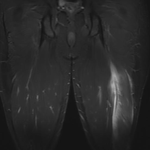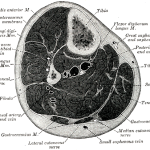Introduction
It is no secret that sports physiotherapists and physical therapists across the world commonly assess and treat knee injuries. Of these injuries, patellofemoral pain is exceptionally common, accounting for 25% of all sports related knee injuries (Fredericson & Yoon, 2006). In fact, patellofemoral pain syndrome is the most commonly reported injury sustained by runners (Taunton et al., 2002). As many of the aetiological factors that contribute to patellofemoral pain syndrome have not been clearly identified, decision making regarding appropriate rehabilitation and treatment can often be challenging. Therefore, it is no surprise that this is a topic that has been well covered on this site, including discussions regarding:
- Gait Retraining for Patellofemoral Pain Syndrome
- Short-Term Effects of Hip Strengthening on Patellofemoral Pain Syndrome
- Orthotics for Patellofemoral Pain Syndrome
- Predicting Who Will Develop Patellofemoral Pain Syndrome
These articles are worth reading if you haven’t yet. This article will discuss the use of isometric adduction during closed kinetic chain lower limb exercises to facilitate vastus medialis obliquus (VMO) activation (Peng et al., 2012).
Background Information
Previous research has demonstrated that athletes (or patients) with patellofemoral pain syndrome display a delayed onset of the VMO when compared with the vastus lateralis (VL) and a lower VMO:VL ratio (Powers, 2000). This is considered pathologically relevant as function of the VMO is important to oppose the lateral force produced by VL (Sakai et al., 2000). Therefore, sports physiotherapists will attempt to restore balance by emphasising activation of VMO during corrective exercises (Fagan & Delahunt, 2008).
Physiotherapists and physical therapists will attempt to manipulate their approach to exercises in an attempt to maximise VMO activity. Researchers suggest that co-contraction of the hip adductors and knee extensors may elicit greater VMO activation (Hodges & Richardson, 1993). The theory behind this research is the anatomical connection between the adductor mass and VMO, as the majority of VMO’s fibers arise from the tendon of adductor magnus. Indeed, this has been previously researched with some encouraging results… whilst other have shown no effect at all (Peng et al., 2012).
Which means we don’t know what to believe! Take us to the new research…
New Research on Facilitating VMO Activation
Peng et al. (2012) have delivered a study with 2 primary aims:
- To investigate the effect of sub-maximal and vigorous isometric hip adduction on the VMO, VL muscle activation, as well as the VMO:VL ratio during concentric/eccentric phase of 90-degree knee extension/flexion of the leg press
- To explore the VMO and VL muscle activities, as well as the VMO/VL ratio in six 15-degree intervals throughout the leg press exercise
So they took 10 (… I know) healthy male (yes… I know) subjects and rigged them up with SEMG. After a quick warm-up and static stretch they asked them to perform 3 exercises (which were randomised in order):
- Conventional Leg Press
- Leg Press and sub–maximal isometric hip adduction (termed LP+)
- Leg press and vigorous isometric hip adduction (termed LP++)
The authors utilised the surface EMG results from VMO, VL and Hip Adductor Longus (HAL) to evaluate the variation between the 3 leg press conditions. They found some interesting results…
Results of The Research
Whilst there were differences in HAL activity, the authors failed to show an effect of eliciting more VMO activity by incorporating isometric hip adduction into a conventional leg press exercise in a general analysis of the concentric and eccentric phases of the LP+ and LP++ conditions. There was, however, a statistically significant effect size for VMO:VL ratio when comparing LP to the LP+ and LP++ conditions (mean VMO:VL ratio improved from 0.85 to 0.90 and 0.88 respectively, it is worth noting that the ideal ratio is considered to be 1.0).
Whilst the authors demonstrated some benefit at specific leg press ranges of motion (most notably in the last 45˚ of extension) adding isometric hip adduction to the leg press exercise through the full range of motion was not supported by this study. This finding was supported by the findings of previous studies which indicated that the addition of isometric hip adduction had no effect on the relative activation of the VMO and VL in healthy subjects (Earl et al., 2001; Hertel et al., 2004; Karst & Jewett, 1993; Laprade et al., 1998).
Limitations of The Research
As is par for the course, there are a few limitations to this study of which the authors are aware. These include:
- The study population consists of healthy males: this means the results may not be generalised to females or patients with patellofemoral pain. As you may expect, there has been research using patients with patellofemoral pain syndrome. Unfortunately, the results of these studies has also been conflicting (Coqueiro et al., 2005; Laprade et al., 1998).
- Small sample size (n=10): the authors state to detect a significant effect for vastus muscle activation with isometric hip adduction during the leg press, at least 42 subjects were needed to have 80% power
- The study uses the leg press: the results may not be generalisable to other closed kinetic chain lower limb exercises (squats, lunges etc) and therefore all clinic settings or home exercise programs
But my big question is (and the biggest potential limitation)…
Should We Encourage Hip Adduction in PFPS Patients?
Recent studies of females with patellofemoral pain syndrome have identified the presence of increased femoral internal rotation and adduction causing a dynamic valgus alignment (Powers et al, 2003; Souza et al, 2009). Furthermore, research into correcting these kinematic deviations in the form of neuromuscular training and strengthening of proximal hip stabilisers, without any strengthening of the vastus medialis obliquus, have yielded positive results (Noehren et al., 2011; Fukuda et al., 2010).
So I have to ask; is doing exercises that (mildly) increases VMO:VL ratio but potentially encourages aberrant patterns by eliciting adduction (think the potential ‘turning off’ the patient’s lateral pelvic stabilisers) really going to lead to better clinical outcomes? Whilst of course these assumptions need to be tested in the research, maybe I’m missing something… but I think encouraging hip abduction (or more accurately good form) through pelvic stabiliser contraction when undertaking closed kinetic chain exercises may deliver a more functionally relevant and clinically superior result. Furthermore, to ensure adequate and timely activation of vastus medialis EMG biofeedback is absolutely essential!
What do you think? This is something that I would love you guys to discuss in the comments below – tell me I’m dreaming or what you would do clinically!
Some Food For Thought
In this video Charlie Weingroff (Doctor of Physical Therapy, Strength & Conditioning Coach and Athletic Trainer) discusses the theories of Gray Cook (Physical therapist, Orthopedic Certified Specialist, and Certified Strength and Conditioning Specialist) and the technique of Reactive Neuromuscular Training…check out what Charlie has to say in the video below re: correcting knee and squat patterns.
If you have anything else to say you can also catch me on Facebook or Twitter.
Promote Your Own Clinic: Are you a physiotherapist or physical therapist looking to promote your own clinic, check this out.
References
Coqueiro KRR, Bevilaqua-Grossi D, Berzin F, Soares AB, Candolo C, Monteiro-Pedro V. Analysis on the activation of the VMO and VLL muscles during semisquat exercises with and without hip adduction in individuals with patellofemoral pain syndrome. Journal of Electromyography and Kinesiology 2005;15(6):596-603
Earl, JE, Schmitz, BL., & Arnold, BL. Activation of the VMO and VL during dynamic mini-squat exercises with and without isometric hip adduction. Journal of Electromyography and Kinesiology, 2001:11;381-386.
Fagan, V, & Delahunt, E. Patellofemoral pain syndrome: a review on the associated neuromuscular deficits and current treatment options. British Journal of Sports Medicine, 2008;42:789-795.
Fredericson, M & Yoon, K. Physical examination and patellofemoral pain syndrome. American Journal of Physical Medicine and Rehabilitation. 2006;85:234-243.
Fukuda TY, Rossetto FM, Magalhães E, Bryk FF, Lucareli PRG, Carvalho NA. Short-term effects of hip abductors and lateral rotators strengthening in females with patellofemoral pain syndrome: a randomized controlled clinical trial. J Orthop Sports Phys Ther 2010;40(11):736-742
Hertel, J, Earl, JE, Tsang, KKW, & Miller, SJ.Combining isometric knee extension exercises with hip adduction or abduction does not increase quadriceps EMG. Journal of Sports Medicine, 2004;38:210-213
Hodges, PW & Richardson, CA. The influence of isometric hip adduction on quadriceps femoris activity. Scandinavian Journal of Rehabilitation Medicine, 1993;25:57-62
Karst, GM, & Jewett, PD. Electromyographic analysis of exercises proposed for differential activation of medial and lateral quadriceps femoris muscle components. Physical Therapy, 1993;73:286-299.
Laprade, J, Culhan, E, & Brouwer, B. Comparison of five isometric exercises in the recruitment of the vastus medialis oblique in persons with and without patellofemoral pain syndrome. Journal of Orthopaedic and Sports Physical Therapy, 1998;27:197-204.
Miller, J, Sedory, D, & Croce, R. Vastus medialis obliques and vastus lateralis activity in patients with and without patellofemoral pain syndrome. Journal of Sport Rehabilitation. 1997;6:1-10.
Noehren B, Scholz J, Davis I. The effect of real-time gait retraining on hip kinematics, pain and function in subjects with patellofemoral pain syndrome. Br J Sports Med 2011;45:691-696.
Peng, HT, et al. Muscle activation of vastus medialis obliquus and vastus lateralis during a dynamic leg press
exercise with and without isometric hip adduction. Physical Therapy in Sport (2012), doi:10.1016/j.ptsp.2012.02.006
Powers, CM. Patellar kinematics, part I: the influence of vastus muscle activity in subjects with and without patellofemoral pain. Physical Therapy, 2000;80:956-964
Powers CM, Ward SR, Fredericson M, Guillet M, Shellock FG. Patellofemoral kinematics during weight-bearing and non-weight-bearing knee extension in persons with lateral subluxation of the patella: a preliminary study. J Orthop Sports Phys Ther. 2003;33:677-685.
Sakai, N, Luo, ZP, Rand, JA, & An, KN. The influence of weakness in the vastus medialis oblique muscle on the patellofemoral joint: an in vitro biomechanical study. Clinical Biomechanics, 200;15:335-339.
Souza RB, Powers CM. Differences in hip kinematics, muscle strength, and muscle activation between subjects with and without patellofemoral pain. J Orthop Sports Phys Ther. 2009;39:12- 19
Taunton JE, Ryan MB, Clement DB, et al. A retrospective case–control analysis of 2002 running injuries. Br J Sports Med 2002;36:95 – 101.
Photo Credit: Nick J Webb
Related Posts









